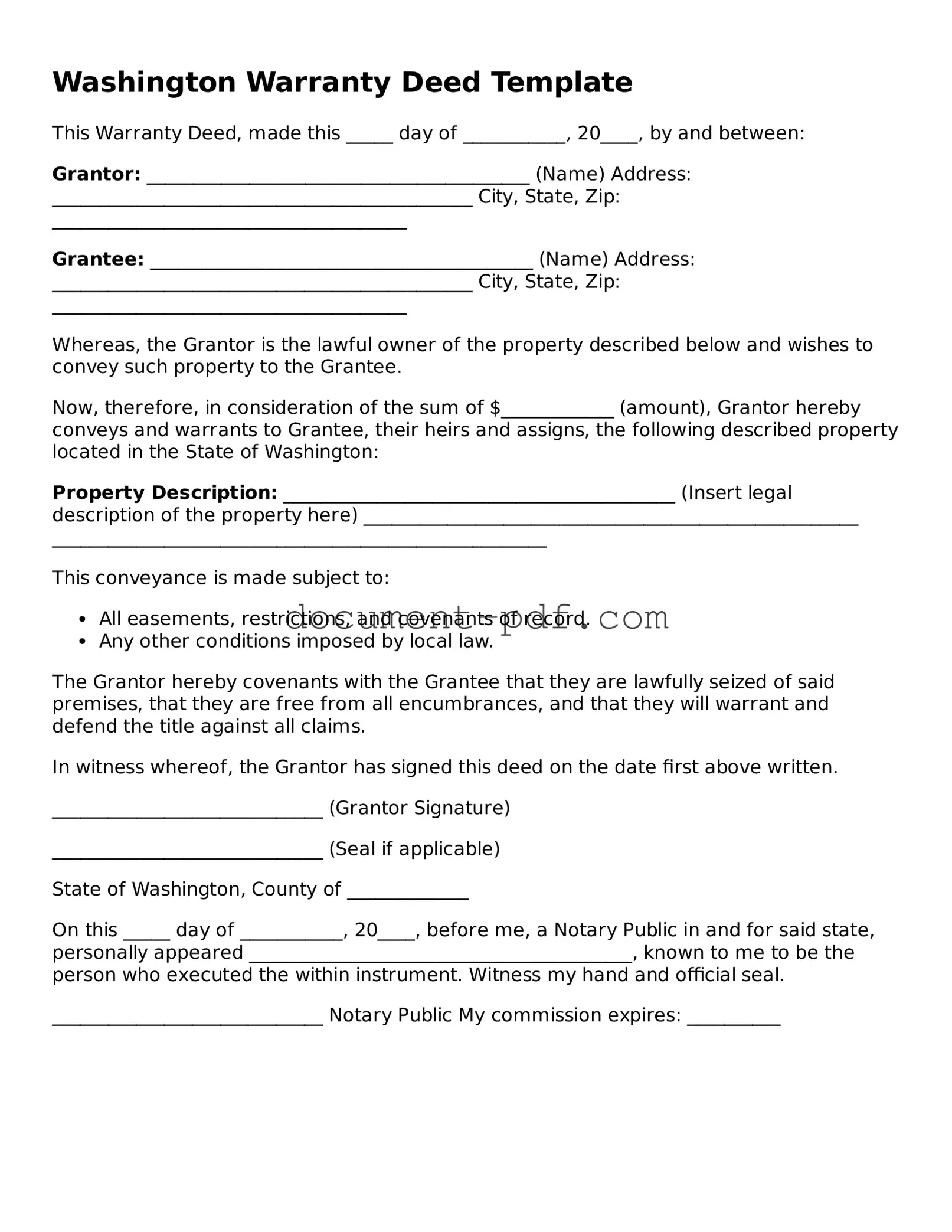Washington Warranty Deed Template
This Warranty Deed, made this _____ day of ___________, 20____, by and between:
Grantor: _________________________________________ (Name)
Address: _____________________________________________
City, State, Zip: ______________________________________
Grantee: _________________________________________ (Name)
Address: _____________________________________________
City, State, Zip: ______________________________________
Whereas, the Grantor is the lawful owner of the property described below and wishes to convey such property to the Grantee.
Now, therefore, in consideration of the sum of $____________ (amount), Grantor hereby conveys and warrants to Grantee, their heirs and assigns, the following described property located in the State of Washington:
Property Description: __________________________________________
(Insert legal description of the property here)
_____________________________________________________
_____________________________________________________
This conveyance is made subject to:
- All easements, restrictions, and covenants of record.
- Any other conditions imposed by local law.
The Grantor hereby covenants with the Grantee that they are lawfully seized of said premises, that they are free from all encumbrances, and that they will warrant and defend the title against all claims.
In witness whereof, the Grantor has signed this deed on the date first above written.
_____________________________
(Grantor Signature)
_____________________________
(Seal if applicable)
State of Washington, County of _____________
On this _____ day of ___________, 20____, before me, a Notary Public in and for said state, personally appeared _________________________________________, known to me to be the person who executed the within instrument.
Witness my hand and official seal.
_____________________________
Notary Public
My commission expires: __________
